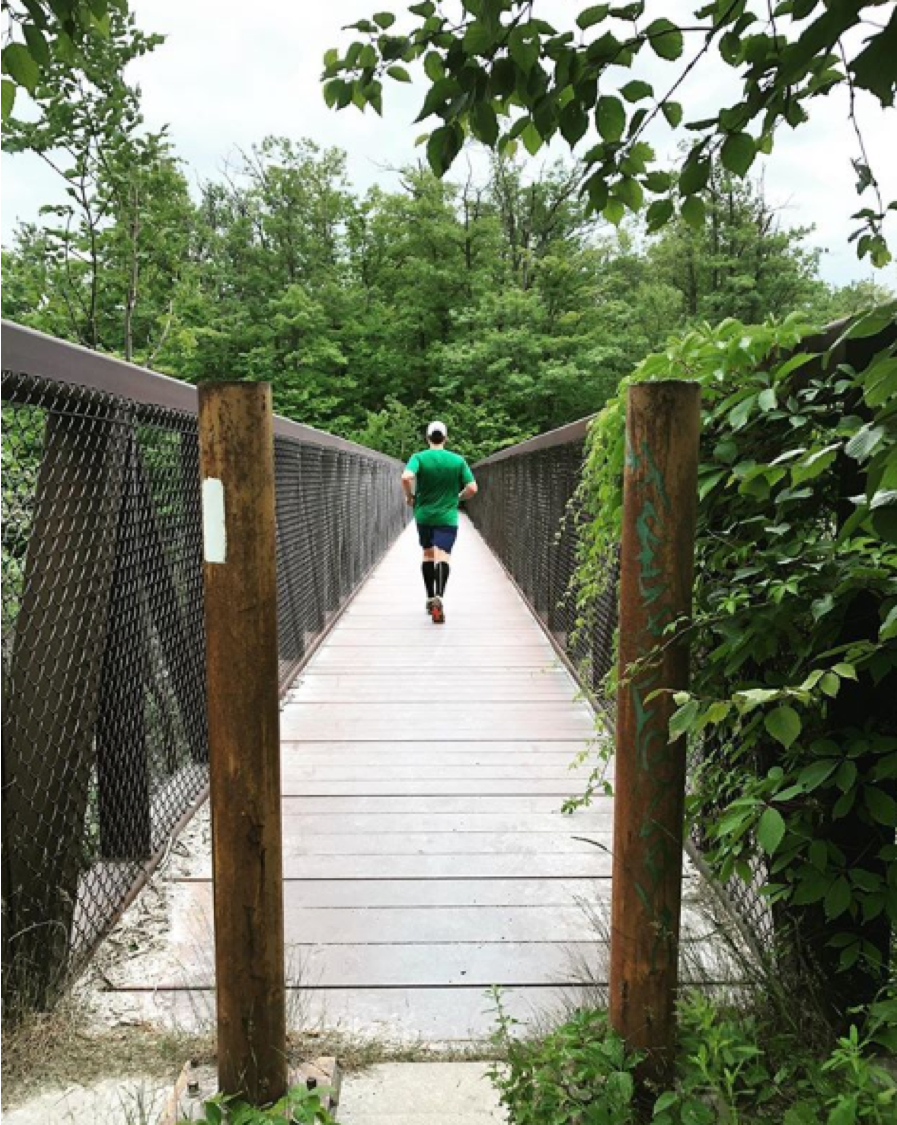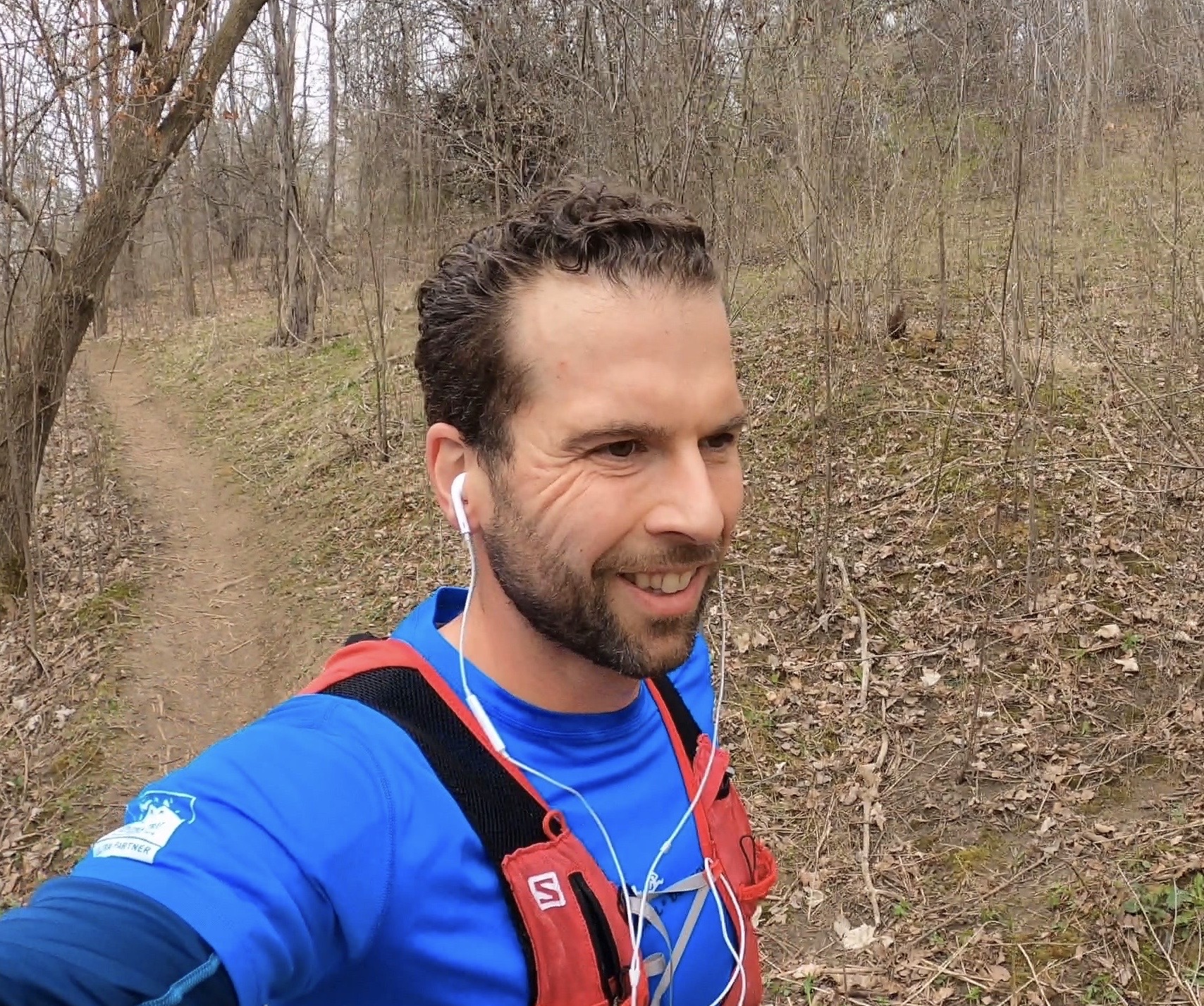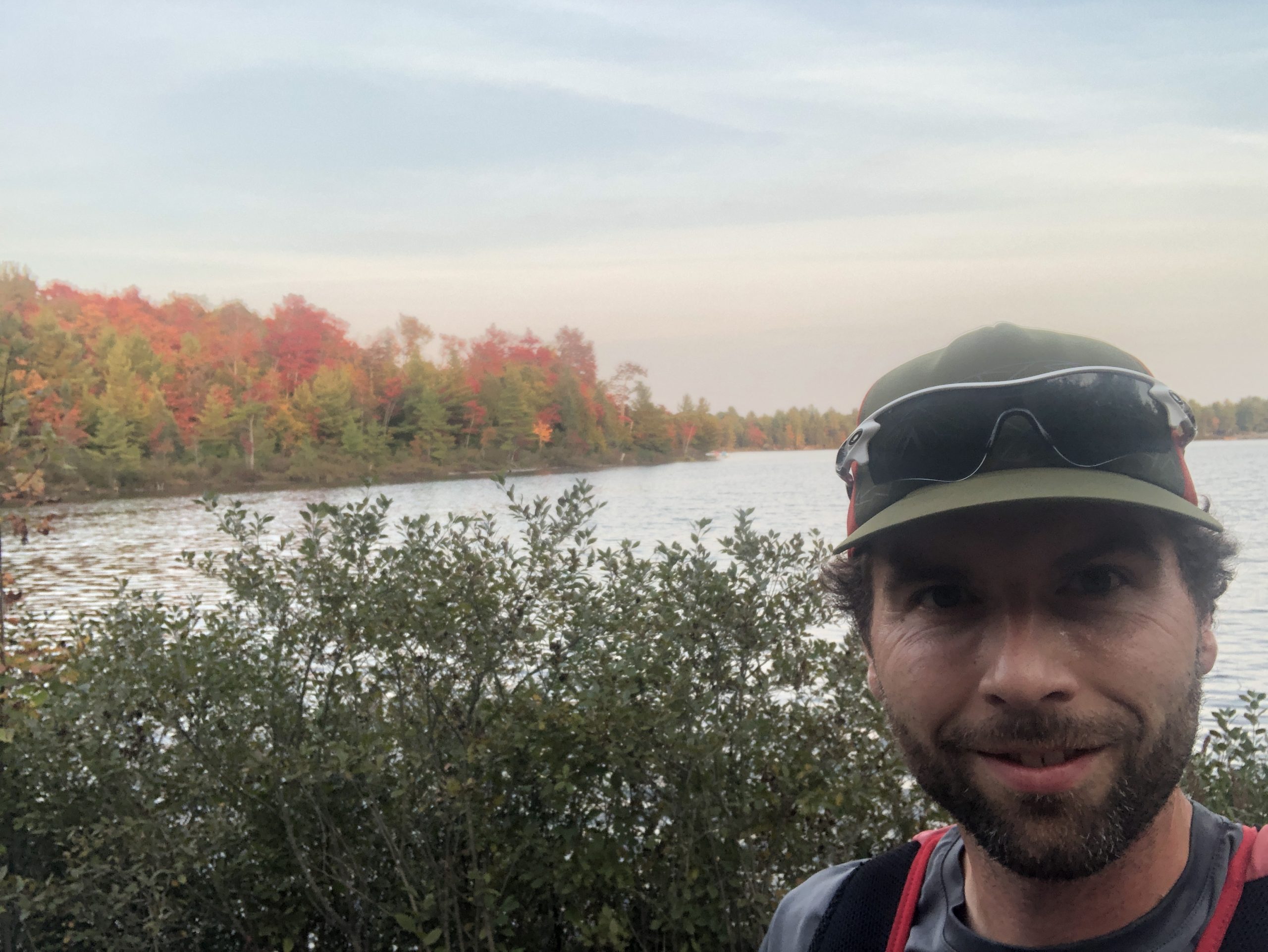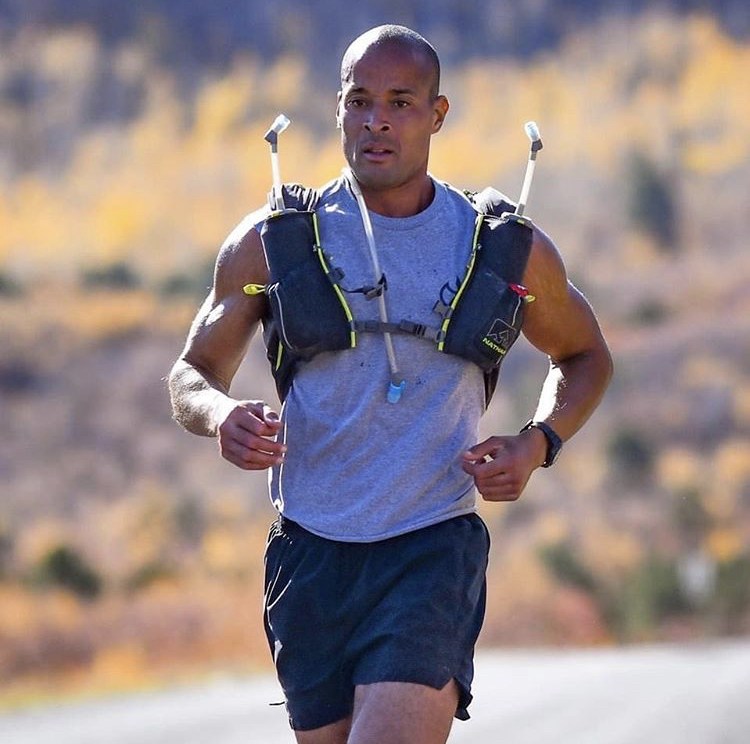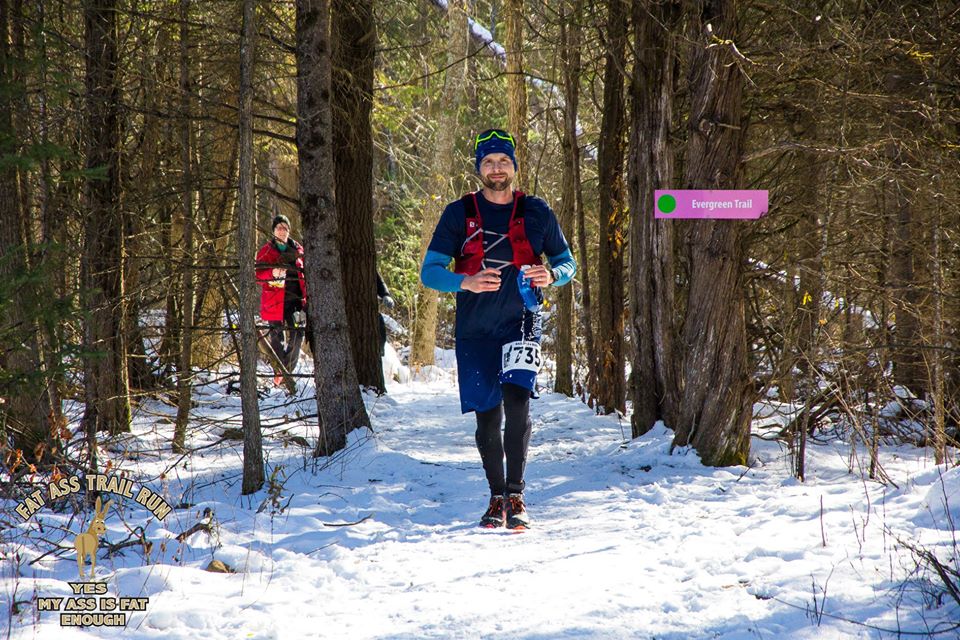
I was considering calling this post “Don’t be a Little Bitch” but I decided to take a more compassionate approach. It’s hard to get motivated to run in the winter. It’s dark and cold outside and the house is so warm and cozy. Many runners choose to run indoors in the winter but I love winter running. It’s easy to feel confined to the house in the winter and it always feels great to get outside for a run even in freezing temperatures.
Proper running clothes are the key to winter running and I discuss my winter running gear below. I also bust some common myths about winter running.
Winter Running Clothes
Temperatures: -5°C to +5°C:
I wear a pair of standard running tights (Under Armour or Sugoi brand) with my shorts over top. For upper body, I wear a long sleeve dry fit shirt with a dry fit T-shirt over top. I wear a buff on my head and will pull it down over my ears if needed. For gloves, I wear the thin, stretchy cotton gloves – the cheap ones that you find at the grocery store. I will sometimes wear a pair of thin, Spring gloves over top and then take them off when my hands warm up.
Temperatures: -5°C or colder:
I wear warm running pants in really cold temperatures. Winter running pants are expensive but worth it. They keep you warm while being made of thin and flexible material. I wear running tights underneath the pants when it gets really cold, -20°C or colder. A word of caution for men, despite layering running tights and pants you can still get very cold down south. Wearing a pair of warm underwear or running shorts over top of your tights helps.
For upper body, I wear a long sleeve dry fit base layer, a dry fit sweater and a running jacket. You can remove the sweater and tie it around your waist if you get too hot.
I stick with the buff on my head until around -10°C and then switch to a synthetic toque that I can pull down over my ears. I wear a face warmer when it gets really cold, under -25°C. This is uncomfortable at first – it feels strange having a cloth over your mouth when breathing hard. You get used to it quickly though with some relaxed breathing.
Myths about winter running:
“You’ll freeze your lungs”
Running in the cold is uncomfortable for only the first few minutes as your airways adapt to the cold. The human body can amazingly handle most climates on earth including extreme cold. However, running in the cold can irritate lungs that are already distressed. For example, if you have a cough or mild asthma.
“Running on snow is bad for your knees”
Snow creates uneven surfaces however this is no different than running on uneven trails in other seasons. Running on uneven surfaces can strengthen the small stabilizing muscles in your legs. I recently ran the Fat Ass, 6 hour trail race on hard packed snow. I had a great time running, didn’t get any injuries and set a personal best for my 50km time.
“My body doesn’t work in the cold”
If this is your mindset, I would strongly encourage you to test your hypothesis by dressing warmly and going for a short run in the cold. I guarantee that your body will work. It takes longer to warm up in the cold but your body is well adapted to function in the cold.
“You’ll slip on ice and kill yourself”
Ice is dangerous and you will want to avoid it. However, running on slippery rocks and slick mud in other seasons is dangerous as well. A good trail shoe can help give you extra traction on ice and slippery snow. You can use a traction device like Yaktrax or microspikes to give you even more traction.
A disclaimer that my recommendations apply only for long runs of 3-4 hours in the cold. As you can imagine, very special preparations are needed for winter ultra marathons. In races of 12 hours or more, hypothermia is a real danger.
I have a hard time getting out running in the first few weeks of the winter. It’s like I have a mental block after the first snow. When I finally build up the nerve to go running in the cold, I’m always glad that I did. Running outside in the winter gets easier the more you practice it. It’s a great way to beat cabin fever and the winter blues.


